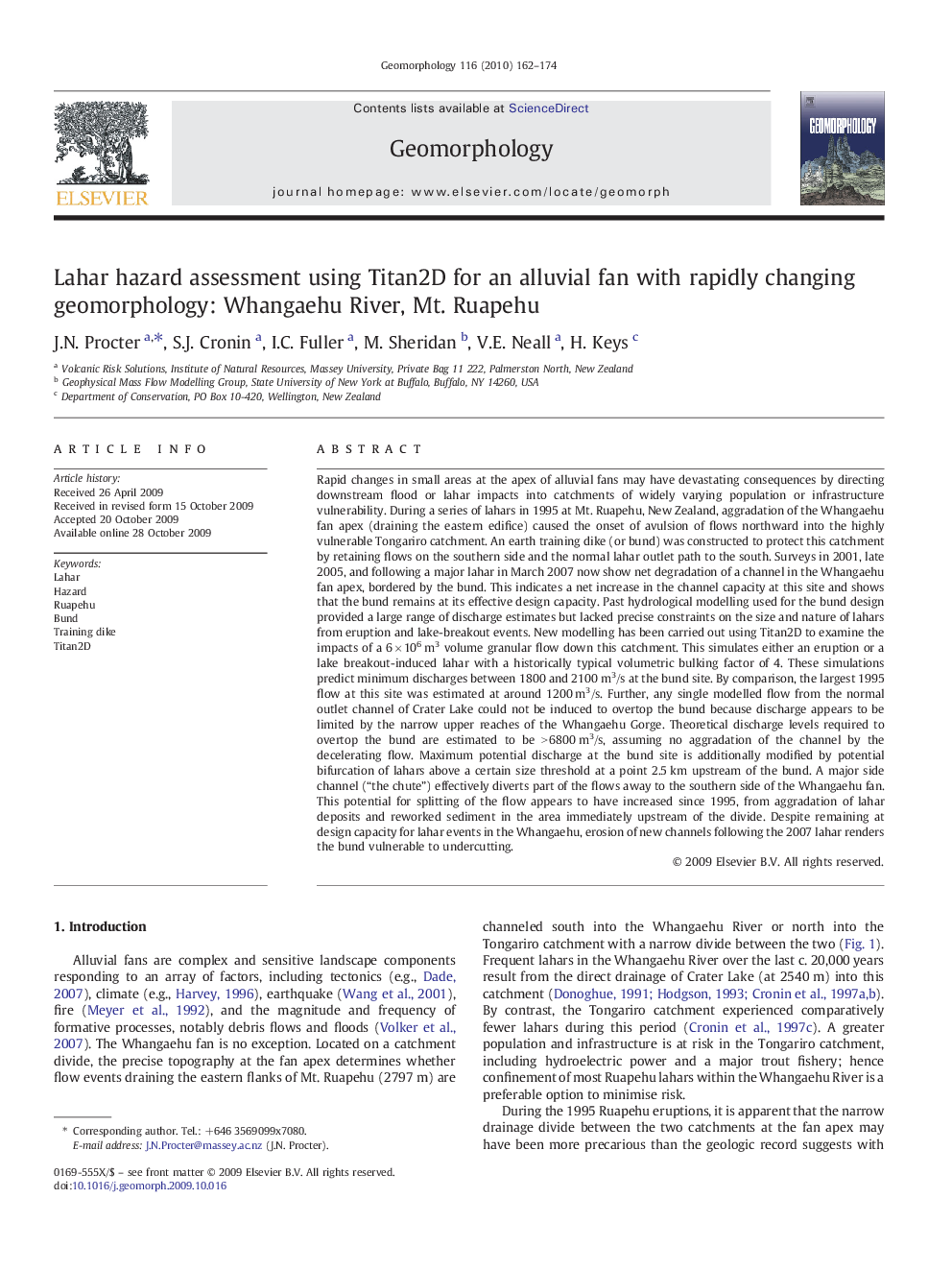| Article ID | Journal | Published Year | Pages | File Type |
|---|---|---|---|---|
| 4686094 | Geomorphology | 2010 | 13 Pages |
Rapid changes in small areas at the apex of alluvial fans may have devastating consequences by directing downstream flood or lahar impacts into catchments of widely varying population or infrastructure vulnerability. During a series of lahars in 1995 at Mt. Ruapehu, New Zealand, aggradation of the Whangaehu fan apex (draining the eastern edifice) caused the onset of avulsion of flows northward into the highly vulnerable Tongariro catchment. An earth training dike (or bund) was constructed to protect this catchment by retaining flows on the southern side and the normal lahar outlet path to the south. Surveys in 2001, late 2005, and following a major lahar in March 2007 now show net degradation of a channel in the Whangaehu fan apex, bordered by the bund. This indicates a net increase in the channel capacity at this site and shows that the bund remains at its effective design capacity. Past hydrological modelling used for the bund design provided a large range of discharge estimates but lacked precise constraints on the size and nature of lahars from eruption and lake-breakout events. New modelling has been carried out using Titan2D to examine the impacts of a 6 × 106 m3 volume granular flow down this catchment. This simulates either an eruption or a lake breakout-induced lahar with a historically typical volumetric bulking factor of 4. These simulations predict minimum discharges between 1800 and 2100 m3/s at the bund site. By comparison, the largest 1995 flow at this site was estimated at around 1200 m3/s. Further, any single modelled flow from the normal outlet channel of Crater Lake could not be induced to overtop the bund because discharge appears to be limited by the narrow upper reaches of the Whangaehu Gorge. Theoretical discharge levels required to overtop the bund are estimated to be > 6800 m3/s, assuming no aggradation of the channel by the decelerating flow. Maximum potential discharge at the bund site is additionally modified by potential bifurcation of lahars above a certain size threshold at a point 2.5 km upstream of the bund. A major side channel (“the chute”) effectively diverts part of the flows away to the southern side of the Whangaehu fan. This potential for splitting of the flow appears to have increased since 1995, from aggradation of lahar deposits and reworked sediment in the area immediately upstream of the divide. Despite remaining at design capacity for lahar events in the Whangaehu, erosion of new channels following the 2007 lahar renders the bund vulnerable to undercutting.
